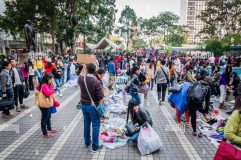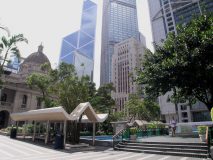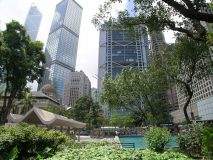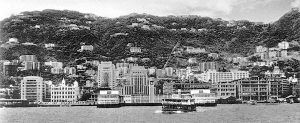(1) Introduction — Description of the theme and subject matter
The video focuses on the equitable nature of the Statue Square, a historic public plaza located in the heart of the city’s bustling Central district. It highlights how this space, despite the dynamism of its surrounding environment, has remained a constant beacon of inclusivity for Hong Kong’s diverse population.

The video stresses that the harmonious coexistence of individuals from varied socioeconomic backgrounds within Statue Square is a testament to its enduring role as a place that fosters a strong sense of community and social cohesion. Through the use of various shots from different angles, the video illustrates this point, putting the viewer right in the middle of the square and allowing them to witness the interactions and experiences of the diverse people who use the space.
As one of Hong Kong’s most significant public spaces, Statue Square is depicted as a reflection of the city’s ever-changing, complex identity. This is especially evident in the video’s incorporation of documentary footage from different decades, showcasing how the square has been viewed and valued by various groups of people over time. Yet, the video highlights how Statue Square continues to serve as a beacon of equitable inclusivity, providing a sanctuary where people from all walks of life can gather, interact, and find respite on an equal footing, regardless of their status or background.



Moreover, the video underscores how Statue Square, with its well-maintained public facilities and amenities, such as shaded pavilions and fountains, caters to a diverse array of users – from the elderly to the homeless. This reinforces the square’s position as a truly inclusive and equitable space within Hong Kong’s dynamic urban landscape, where it functions as an oasis of community and social cohesion amidst the bustling commercial district that surrounds it.


Through its skillful blend of documentary sources, self-filmed footage, and cinematic techniques, the video presents a multifaceted and nuanced exploration of Statue Square’s enduring significance. This multimedia approach allows the viewer to engage with the square’s complex identity and its role as a reflection of Hong Kong’s ever-evolving social, political, and cultural landscape.
(2) Method of conducting the research and producing the video
This video uses a carefully selected set of documentary sources and self-filmed footage and photos to showcase Statue Square’s evolution over time and its current state. By including materials from different documentary productions made across the decades, the video provides a rich, well-rounded perspective on this historic public space.
The use of documentary clips and photos from various eras allows the video to trace how the social, political, and cultural significance of Statue Square has changed over the years. From old archival footage to more recent, up-close recordings, the documentary sources reflect the shifting attitudes and perceptions surrounding this iconic landmark. This strategic selection of materials helps viewers understand how Statue Square has remained an important part of Hong Kong, even as the city has transformed around it.



(3) Reflections
The video attempts to show Statue Square as a place that treats everyone equitably. However, there are ways the video could strengthen this central narrative. The video should carefully choose more documentary footage that directly addresses how the square is used by different groups of people, including those who are often left out in society. The camera work could also be improved – using wider shots to capture the diverse users of the square, and comparing the public spaces to the wealthy areas around it. This would help the video better convey how the square is a welcoming and accessible place for all within Hong Kong’s busy city.
Another potential improvement for the video could be the incorporation of more contextual information. While the documentary sources and self-filmed footage provide a rich tapestry of perspectives, the inclusion of scholarly insights or interviews with local residents, involved parties, and even local historians and urban planners could further deepen the viewer’s understanding of the square’s significance and its evolving place within Hong Kong’s complex social and political landscape.
(4) Bibliography
A View On Cities. (2019). Hong Kong Attraction: Statue Square. From A View On Cities: https://aviewoncities.com/hong-kong/statue-square
DeWolf, C. (2019, February 03). Hong Kong’s seat of power, Statue Square – its colonial history, symbolism, and how domestic helpers made it their own. From South China Morning Post: https://www.scmp.com/lifestyle/travel-leisure/article/2184584/hong-kongs-seat-power-statue-square-its-colonial-history
Hong Kong Cheapo. (2023). Statue Square. From Hong Kong Cheapo: https://hongkongcheapo.com/place/statue-square/
Lam, P. (2021, May 20). Statue Square – A Place With Statue But Not The Queen Victoria. From Hong Kong Free Tours: https://hongkongfreetours.com/statue-square/
TAM, W. S. (2020, March 13). Public space and British colonial power : the transformation of Hong Kong Statue Square, 1890s-1970s . From https://commons.ln.edu.hk/cgi/viewcontent.cgi?article=1004&context=his_etd
Szeying Chan
UID: 3036187725
I appreciated your article which gave me an insight into the background and culture of statue square. The article effectively characterises statue square, emphasising its inclusiveness and social cohesion, and also explores the use of the square by different groups. The article is well organised and structured. The video uses a number of photographs to give me a view of this square at different times. Besides, some of the shots in the video are quite impressive like aerial shots.